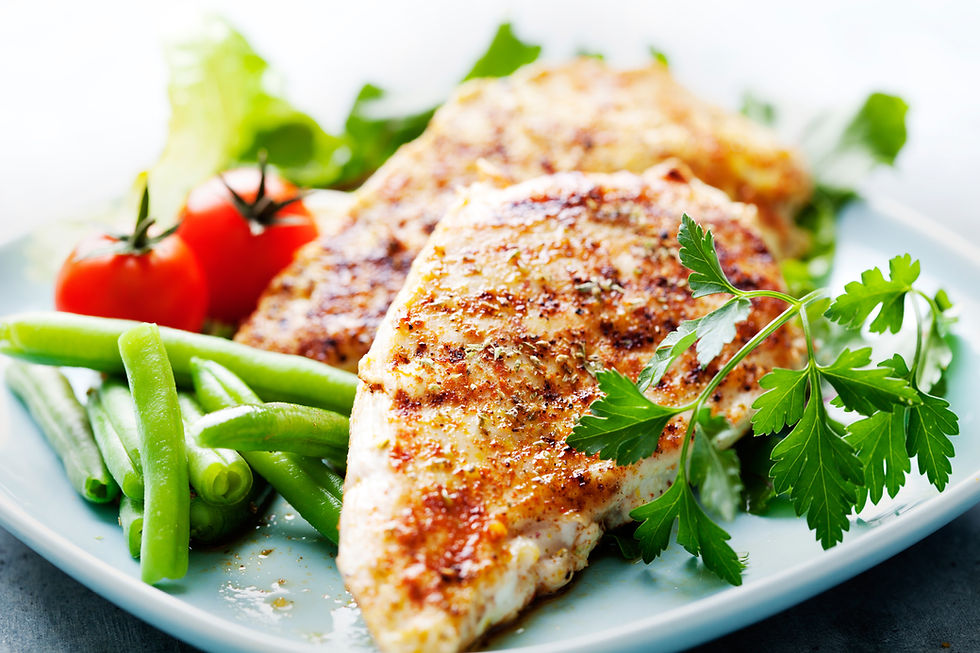Food Stats: Acai Berry
- Linked Fit

- Sep 8, 2020
- 3 min read
Updated: Jan 10, 2021
Everyone tells us how good they are, but what do we actually know about açai berries?
Overview
Acai berries are native to the Amazon Rainforest!
The word açai comes from the Portuguese adaptation of the Tupian word “iwacai” meaning, “fruit that cries or expels water.”
Açai has become popular, mostly starting in the 1990s due to its nutritional value.
There are two main harvests for açai berries. One takes place between January and June and the other between August and December. The last harvest is the most important!
A branch from an açai tree can hold anywhere between 500 to 900 fruits!

The Look
The açai berry is found as a small, round-shaped, black colored “drupe.” A drupe is a soft berry surrounding one seed.
They are similar looking to grapes but can be even smaller.
Açai fruits can range from a black-ish color, purple, or even green. The color depends on its maturity as a fruit.
The seed inside the açai drupe takes up between 60-80% of the entire fruit.
Nutrition
Vitamins C, E, and many B vitamins
Beta Carotene
Calcium
Copper
Magnesium
Phosphorus
Zinc
Fiber
Omega-3 Fatty Acids
Benefits
B vitamins promote a healthy metabolism and contribute to overall energy balance.
Vitamin C is an antioxidant and its biochemical functions include assisting in the synthesis of collagen, carnitine, and norepinephrine.
Vitamin E primarily acts as an antioxidant by quenching free radicals in the body. In addition to being an antioxidant, it protects and maintains the membranes of cells in the body.
Beta Carotene acts as a provitamin or a precursor for Vitamin A. This means it can later be converted into Vitamin A. Beta carotene is found to be present in the interior membranes of cells and acts as antioxidants to quench free radicals.
Calcium plays a large role in healthy bone formation along with nerve transmission and muscle contraction.
Copper is an antioxidant and works by quenching or neutralizing free radicals.
Magnesium is a component of bones and plays a role in nerve impulse transmission and protein synthesis.
Phosphorus is a structural component of teeth, bones, cell membranes, phospholipids, nucleic acids, and more. Phosphorus plays a role in pH regulation and ATP-ADP phosphate systems in cells.
Zinc plays a large role in metabolizing other nutrients and collagen formation. Zinc works to detoxify alcohol, eliminate carbon dioxide, and promotes cell replication and growth.
Fiber can function as a prebiotic and promote the growth of certain healthy colonic bacteria, specifically lactobacilli and bifidobacteria!
Omega-3 fatty acids have been known to reduce inflammation.
Serving Size
About 1 ounce of açai berries is 20 calories
About 1.1 grams of carbohydrates
About 0.3 grams of protein
About 1.4 grams of fat
About 0.6 grams of fiber
Use & Cooking
Açai berries can be cultivated for juices, their seeds, and the use of their dried skin or pulp.
Açai oil is used as salad dressing, cooking oil, or even in shampoos and conditioners due to its moisturizing properties!
Açai berries are popularly found in smoothies across many different companies such as Tropical Smoothie, Smoothie King, and Jamba Juice.
Açai is commonly found in supplements and powders for their nutritional properties.
Storage
The dried pulp and seeds are usually frozen since açai berries do not last long after being harvested.
Powdered açai can last up to a year and frozen açai is recommended to stay frozen (keep frozen until use). It will lose its nutrient properties and become an unwanted texture if thawed and refrozen.

Recipes
Açai oil can be used as a delicious dressing on top of a summer salad and is low calorie.
Açai is used in smoothies containing other berries such as blueberries, pomegranate, and strawberries because the flavors flow well together. If making a smoothie, adding a scoop of protein powder can make this a fantastic meal replacement for on the go!
Açai bowls are a refreshing snack as well and are basically a smoothie but served as a bowl!
References
Gropper, S. A., Smith, J. L., & Groff, J. L. (2018). Advanced Nutrition and Human Metabolism (Sixth ed.). Boston, MA: Cengage Learning.









Comments